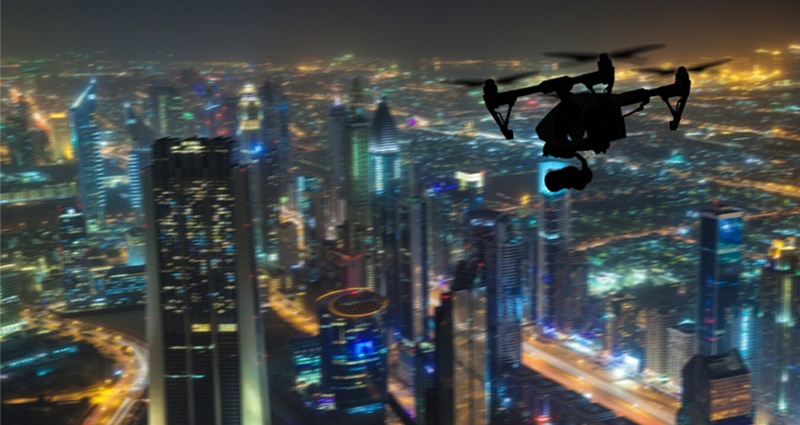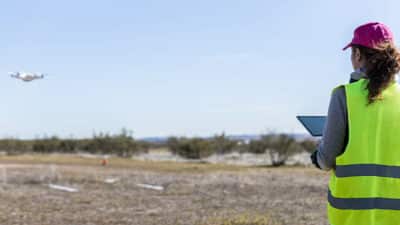Improving Safety: Understanding sUAS Autonomous Capabilities

There’s absolutely no doubt about it: the future of commercial unmanned aircraft operations will revolve around autonomy. Without autonomy, sUAS lose many of the core benefits that have fueled their rapid development and the push for integration into the world’s airspace in recent years.
As a whole, sUAS manufacturers and software developers have made great strides in bringing “spatially aware” autonomous systems and command and control software solutions into the marketplace in recent years. In fact, when reading about the advanced capabilities of currently manufactured small unmanned aircraft, it is easy to believe that your role as the operator is almost unnecessary, even today!
The majority of these sentiments are also supported by manufacturers and software developers in an effort to generate sales for their products. However, it’s important to understand that below a certain price-point (which is typically higher than you may think), the actual performance of these products is not as applicable to every “real-world” environmental situation as it may initially sound.
Understanding Your Systems’ Limitations
One thing that is often overlooked during press releases or brief product reviews of many modern sUAS platforms and command and control software solutions, is the full conditions under which their autonomous operations and sense-and-avoid capabilities have been demonstrated or tested. For instance, the ability of a multirotor sUAS to move at high speed through a confined area may only be possible in certain lighting conditions, when obstacles are of a certain size or color contrast, when moving in a certain direction, etc. Ultimately, it’s the capabilities of both the hardware (the body) and the software or firmware (the brain) that define the artificial intelligence potential of any autonomous sUAS system.
It is true that certain unmanned systems with highly advanced sensors, onboard computers, and software solutions make it possible for the sUA to autonomously navigate the most complex of environments virtually anywhere on the planet and at any time, day or night. However, the majority of currently manufactured sUAS available for between $1,000 and $10,000+ (not including cameras/payloads) do not fall into that category. As a result, these more commonly used small unmanned aircraft have certain real-world limitations when it comes to sense-and-avoid capabilities and true artificial intelligence.
In addition, because it is very common for advanced autonomous flight capabilities to be facilitated using third-party developed software programs for command and control of the sUA, it is possible for uncaught inconsistencies between the software and system firmware versions to cause problems, typically following updates to either. In order to safely resume control of the sUA in these situations, it may be necessary to override the autonomous flight and manually pilot the sUA back for a safe landing. In these situations, having a basic level of safe aircraft handing, or flight skills, should be considered critical. This is especially true considering it may even be necessary to recover the sUA without the use of GPS positioning control during these occurrences, something that every sUAS operator should have experience with in a controlled environment before attempting to fly an sUA for any professional or official purpose.
Every sUAS operator (and program manager) should fully understand the capabilities and limitations of the hardware and software utilized to conduct their flight operations. For example, common visual sensors are very dependent on adequate lighting and image recognition programming. Acoustic sensors may not detect surfaces that absorb or transfer sound waves, such as fluids. Even costly sensors that provide 360 degrees of coverage, such as LiDAR scanners, must be properly configured and programmed with comprehensive parameters for obstacle identification and avoidance, and may also require regular calibrations to maintain high levels of accuracy.
Remember What the FAA Says…
The fact of the matter is that current Federal Aviation Regulations specified in Part 107 are very clear that the Remote Pilot in Command “must have the ability to direct the small unmanned aircraft” as required at any point during commercial flight operations in order to maintain compliance with Federal Aviation Regulations. This means that although we are free to utilize advanced autonomous capabilities to conduct our flights and efficiently collect imagery and data, the operators of all sUAS systems used for purposes regulated by the FAA must be able to assume direct, or manual, control of the aircraft whenever necessary. If the datalink is severed and the remote PIC can no longer direct the path of the sUA, standard Part 107 regulations also require that the flight must be immediately terminated, or the datalink restored, via the use of a failsafe system response.
As a result, it is the responsibility of every professional sUAS operator as an FAA certificated Remote Pilot in Command, to fully understand and be able to safely control their sUAS in any potential operating environment.
Responsible sUAS Flight Operations
History is filled with examples where advancing technology was hailed as infallible, only to result in catastrophic results when subjected to the chaos that is inevitable in our world. It is important to always remember that we as the human operator are still always responsible for the safety and success of our flight operations. And while we all eagerly await the continued advancement of sUAS technology and all of the new capabilities it will provide, we must still resolve ourselves to establishing a firm and complete understanding of our equipment and its functionality before commencing any professional sUAS operations with new or unfamiliar systems.

DARTdrones, the nation’s leading drone training company and new Global Aerospace SM4 partner, offers courses in 40+ cities across the U.S. DARTdrones offers basic flight training classes, Part 107 Airman Knowledge test prep courses, advanced industry specific training, and UAS program implementation consulting services. DARTdrones has been helping individuals and organizations develop safe and efficient sUAS programs and continues to keep new and developing safety considerations at the forefront of their curriculum development. For more information, visit us or call the team at 800-264-3907. DARTdrones was featured on ABC’s Shark Tank in February 2017.
http://www.dartdrones.com
© 2024 DARTdrones. All Rights Reserved.
Next ArticleRelated Posts

Beyond Part 107: Enhancing Drone Pilot Skills for Safety and Performance
As a licensed drone pilot, you can fly commercial missions, embark on exciting new adventures, hone your skills and earn money. Your Part 107 license is an important start on your training journey. However, additional training beyond Part 107 is crucial. You should invest in your future and strive to become the best drone pilot you can be!

Managing In-Flight Emergencies in the Age of Advanced Air Mobility
By 2030, the global eVTOL aircraft market will transport 27 million passengers. Some vehicles will have a single pilot, while others will operate remotely or autonomously with only civilian passengers. Therefore, the companies commercialising this space have a duty of care to their employees and customers to ensure the safety of all on board.

